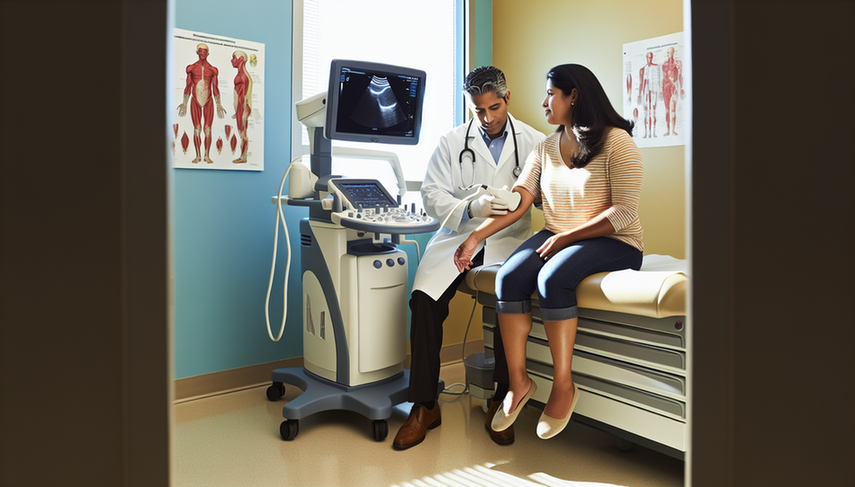High-Frequency Ultrasounds: Enhancing Musculoskeletal Diagnosis and Tissue Evaluation with Detailed Images

The advancement in high-frequency ultrasounds technology has revolutionized the field of medical diagnosis, particularly in the evaluation of musculoskeletal structures and superficial tissues. This technique, which utilizes frequencies higher than conventional methods, allows for the acquisition of detailed images with high resolution, significantly enhancing diagnostic capabilities across various pathologies.
Advancements in Musculoskeletal Diagnosis
The use of high-frequency ultrasounds in musculoskeletal diagnosis has proven particularly beneficial in evaluating superficial and small structures, such as tendons, ligaments, and peripheral nerves. A recent study highlights how this technology has improved the visualization of anatomical structures in the pediatric population, allowing for a better understanding of both normal and pathological anatomy [1]. Furthermore, the ability to perform dynamic studies in real-time offers a significant advantage over other imaging modalities, such as magnetic resonance imaging, which cannot capture the movement of the structures under examination [2].
The tissue evaluation using high-frequency ultrasounds has also shown effectiveness in identifying specific lesions, such as those of the calcaneofibular ligament in chronic ankle injuries, where it has demonstrated high sensitivity and specificity compared to magnetic resonance imaging [3]. This technique not only enhances diagnosis but also facilitates image-guided therapeutic interventions, increasing the precision and safety of procedures.
Conclusions
High-frequency ultrasounds represent a significant advancement in musculoskeletal diagnosis and tissue evaluation. Their ability to provide detailed images and perform dynamic assessments in real-time makes them an indispensable tool in modern clinical practice. As technology continues to advance, it is likely that their use will expand further, improving patient care and optimizing clinical outcomes.
Referencias
- [1] Ultra-high-frequency ultrasound of superficial and musculoskeletal structures in the pediatric population
- [2] Point-of-care ultrasound in musculoskeletal field
- [3] Dynamic high-resolution ultrasound in the diagnosis of calcaneofibular ligament injury in chronic lateral ankle injury: a comparison with three-dimensional magnetic resonance imaging
Created 24/1/2025
